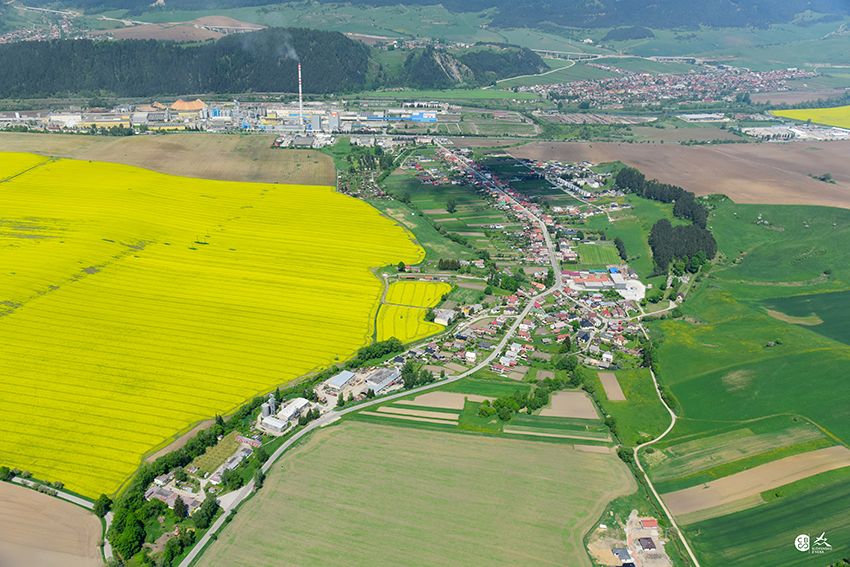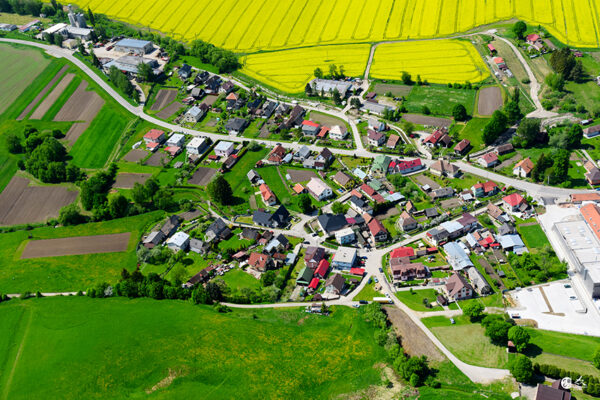A territory, in which the current village of Štiavnička is located, was inhabited in prehistoric times. Archaeological findings from the surrounding area – Pancová (Village of Ludrová) or Lúčny hríb (Village of Štiavnička) are the proof. In the 9th century, a Slavic settlement was established at Lúčny hríb, where researchers documented the findings of contemporary ceramics.
In the ancient Austria-Hungarian Empire, the today´s village of Štiavnička was a part of the royal property of Štiavnica, where an older eponymous village must have been in existence. Its existence is confirmed by the architecture of the nearby colonization Church of All Saints in Ludrová at Kút. The oldest parts of the church date to at least the last third of the 13th century. The church served several settlements, now extinct, with the exception of Liptovská Štiavnica.
In 1300, Ondrej III donated a part of the royal property of Štiavnica, which was a cultivated and agricultural land, to Pavol Madačov´s son and the founder of the settlement of Čerín in the Principality of Zvolen.
In 1380, Louis the Great (also Luis I) reaffirmed an earlier ownership of the original royal property in Štiavnica, and this was reverted back to Štefan, the son of Ján from Štiavnica. It can therefore be assumed that the property belonged to Štefan´s ancestors Ján and Peter in the first half of the 14th century. Ján from Štiavnica, whose grandfather was Rudolf (Rudlinus), the owner of the nearby village of Lurdová, is considered to be the immediate precursor of yeoman families Tholt and Štiavnický. They are directly associated with the history of Štiavnica and a younger village of Štiavnička which was founded as a pure yeoman village in the late 14th or early 15th century.
The first evidence of the village of Štiavnička dates back to 1477. It was a small village inhabited only by yeomen. Assets in Štiavnica had been gradually acquired by Juraj Rakovský, an administrator of the Turiec County and later a vice administrator of the Liptov County and a founder of a family branch of Rakovský in the Liptov County. He gained assets after the death of the Štiavnický family for his service to the King Ferdinand I of Habsburg in his power struggle with Ján Zápoľský. In the 16th century, Štiavnička was inhabited exclusively by two yeoman families, Tholt and the Štiavnický, who lived in two mansions. No retainers lived here (around 1580). And a quarter of century later, in 1600, it was the same; only yeoman families lived here in 4 mansions. In 1818, there were 35 yeoman settlements with more than 150 inhabitants. Settlements had belonged to families Tholt and Štiavnický for centuries. And from the 16th century, it belonged also to Rakovský family. Ignoble population in Štiavnička appeared only gradually. The village formed a large administrative unit including the villages of Veľká Štiavnica and Zemianska Ludrová. This administration connection was interrupted only in 1849 when Zemianska Ludrová was secluded. Štiavnička became an independent municipality in 1888. Its inhabitants were mostly devoted to agriculture. A seat of the Rakovský family was established in the municipality, in a manor house which dates from the mid-1940s. At the beginning of the period of the new Czechoslovak Republic, before making the first land reform, the manor of the prominent Habsburg Legitimist and Austria-Hungarian politician Štefan Rakovský was the third largest in the region Liptov. The situation was very difficult in connection with parcelling out the estate in the mid-1920s among the local residents Štefan Rakovský and Egon Rakovský, because they used all legal means and force to prevent land distribution.
Residents of Štiavnička were in ecclesiastic connection with the already mentioned Church of All Saints at Kút. In 1812, a new Roman Catholic parish was established at Stráň in Villa Ludrová in connection with the construction of the new Church of All Saints, which brought together residents of Ludrová, Štiavnica and Štiavnička. Evangelical population belonged to a church congregation in the settlement of Veľká Paludza after issuing the Patent of Tolerance by Joseph II in 1781. After 1873, the Evangelical population belonged to an Evangelical church congregation in Ružomberok.
The Church of All Saints at Kút in Ludrová was originally built in the vicinity of the town; the religious population belonged to the town.
Thotls (they were given permission by the papal nuncio in 1447) and Rákovskýs were patrons of the medieval church. The town of Ružomberok was a patron of the new Church of All Saints at Stráň. Several disputes arose between patronage families and the town due to the patronage.
Children from Štiavnička attended a school in Štiavnica, which existed in the early 17th century. In 1905 – 1907 it worked as the Roman Catholic school, subsequently nationalized, whereas the population living in the villages was mixed in confession. Since 31.8.1947, there was a one-class public elementary school in Štiavnička located in the castle owned by Egon Rakovský. After 1974, these premises were used as a kindergarten.
In February 1948, Municipal National Committee (MNV) was established in the former school at Majer. Its employees had worked here until 1970, when a school, a kindergarten and a building of Municipal National Committee were built. In 1978, a today’s House of Culture started to be built, including several offices for the National Committee. The multipurpose building was put into operation on 29.11.1980. After 1989, the village of Štiavnička became a corporate entity having its seat in the building of the Municipal Office in Štiavnička.



Please describe your experience